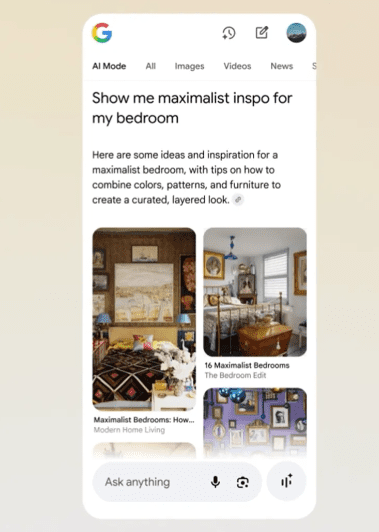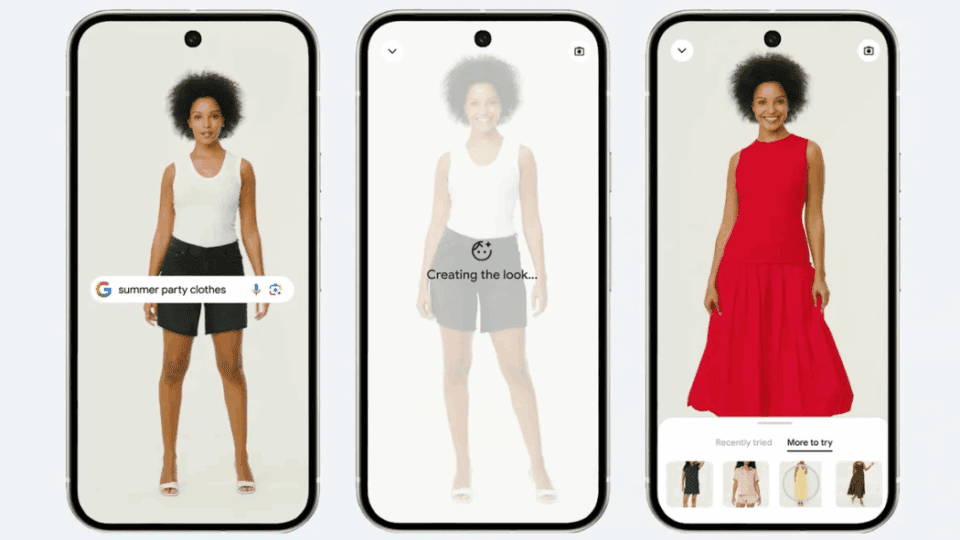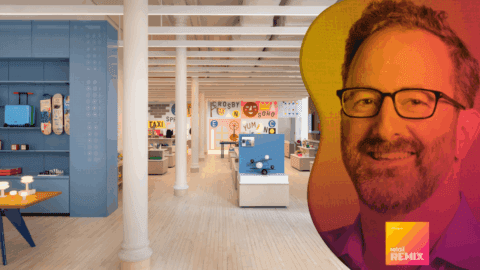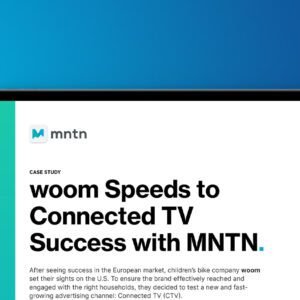As consumers increasingly begin their shopping journeys with conversational AI tools like Google’s Gemini, ChatGPT and Perplexity, there’s been a growing sense that’s it’s only a matter of time before the whole shopping journey — from initial query to purchase — will happen in these platforms. That time has come, with Shopify, Etsy, Salesforce and Walmart all announcing in the last two weeks that they are enabling checkout directly within ChatGPT conversations. More are likely to follow.
In addition to signaling another major shift in the online path to purchase, this recent flurry of news surrounding ChatGPT’s Instant Checkout raises a question — why isn’t Google doing the same? The company’s various tools — Search (now superpowered with AI Overviews), Lens, Maps and the newest addition, AI Mode — are already ubiquitous in consumers’ lives, and Google has been at the shopping game longer than ChatGPT has existed. In fact, thousands of brands and retailers already have their catalogs integrated with Google, accounting for more than 50 billion product listings, and the platform handles more than 1 billion shopping queries every day. So why hasn’t Google rolled out in-app checkout yet?
Google has Never Wanted to be a Retailer (or Even a Marketplace)
While checkout capabilities may be in the works, as recently as late September Google maintained that in-platform purchasing was not its priority. This is in line with how Google has always viewed its role in the commerce landscape: “We’re not a retailer, we’re not a marketplace,” proclaimed Bill Ready, then-President of Google Commerce, in a 2021 episode of the Modern Retail podcast. (Ready has since moved on to the CEO role at Pinterest.)
“What we do want to do is make sure that on a Google surface, the user can discover the best products, the best values, the best sellers, and then seamlessly connect to those sellers,” Ready added. “Most of the time, that actually means clicking out to that seller’s own website; it is not our goal to necessarily keep the user on our platform.”
Also in 2021, Google’s then-VP and General Manager of Merchant Shopping, Matt Madrigal, (also now at Pinterest) told Retail TouchPoints: “We’re indifferent on where the shopping journey ends, where that transaction takes place.” (Side note: interesting that two of Google’s biggest former shopping execs are now at Pinterest, while at the same time Google is ramping up its visual inspiration capabilities in a way that will absolutely be competitive to Pinterest — story for another day.)
Don’t Forget How Google Makes its Money
Google’s approach to shopping has never been about actually making the sale; it’s always been about advertising. To offer advertisers value, Google needs consumer traffic, and shopping is a big part of what brings people to its tools. And while this years-old commentary from execs who are no longer with Google could be outdated, the strategy they conveyed still seems very much in place.
“Our approach is that users want that final control, so we’re bringing the opportunity to see what’s available and then [letting] you take that final action,” said Robby Stein, VP of Product at Google Search during a press briefing on Sept. 29, 2025. “Most of the value for things like booking and ticketing [reservations and travel, for example] is in the research step. That’s the thing that’s really stressful for people and takes a ton of time, and it’s the thing that [offers] the most value right now, at least for shopping and booking.”
Lilian Rincon, VP of Product for Google Shopping, then pointed out that Google does now help with purchasing in one distinct use case — when a product a consumer is tracking through Google reaches the price they had designated (an update to Google’s price-tracking tool that was announced in May). But beyond that already announced functionality, Rincon said “we don’t have anything more to share on that [‘that’ being in-platform checkout].”
Google’s AI Focus: Visual Inspiration
For now at least, Google’s focus on enabling discovery over direct sales looks like it is holding. To that end, the company has made some major enhancements to its online shopping experience, primarily focused on making it more visual. These include more images in search results and conversations, yes, but also continued rollout of its in-platform virtual try-on capabilities.
“Sometimes what you’re looking for just can’t be articulated with text. You can ask AI a question, but it’s a little silly to see a text response,” explained Stein. “In many ways, this is because of how AI has grown up. These are LLMs, they’re language models, chat experiences. So when you ask about designing a room, it’ll explain how to design a room in language. Or if you ask about shopping for shoes, it’ll describe the shoes, when really people want visual inspiration.
“AI is entering this inspirational and visual era with what we’re launching,” Stein added. “Now you can ask a question like this — ‘Show me a maximalist inspo for my bedroom’ — and the AI can respond with visuals. This is, we think, a breakthrough in what’s possible, bringing AI to a whole new set of use cases that expand its utility and value to users all over the world.”
Making AI Mode More Visual, Expanding Virtual Try-on

The visual enhancements Stein is talking about apply specifically to AI Mode, Google’s new conversational AI interface that brings together its Gemini AI model and “all of the incredible context of the web and knowledge that Google Search has,” explained Stein. It also leverages Google’s visual search technology, which the company has honed for years with its Lens tool. AI Mode launched in May and already has more than 100 million monthly users, a number that will most likely continue to grow as it expands to new markets and languages.
Making AI Mode more visual “marks a very important step in making the shopping experience in AI Mode even more helpful,” said Rincon. “Conversational shopping is no longer just about decision-making. We’re really going to be helping with those more upper-funnel inspirational queries as well.”
(And in doing so, hopefully bringing in more and more regular users, who also serve as ad viewers.)
While these new visual enhancements are focused on the distinct AI Mode area of Google Search, Google has been working for some time on making the results in general search queries more visual and engaging. And the company continues to expand its in-platform virtual try-on capabilities, which launched two years ago with beauty, then expanded to apparel and, most recently to footwear.
Perhaps an even bigger enhancement was the announcement earlier this year that customers could now upload a picture of themselves to virtually try products on their own body rather than on virtual models. Users simply click on any product listing on Google, select “try it on” and add a full-length image of themselves to see what they might look like in that dress or boots.
The Battle to Own AI-Powered Shopping
Whether this will be enough to make Google the preferred conversational AI of shoppers remains to be seen. At the moment, Google does appear to be losing to ChatGPT. Data from Similarweb shows that ChatGPT is currently the largest single non-search referral source for major retailers, and in a recent survey from Omnisend, 65% of respondents said that they prefer ChatGPT for shopping over Google, with one in four respondents saying that its recommendations are better than Google’s.
This may in part be due to factors that make the Google experience feel overwhelming to some consumers. First is the sheer volume of information available in Google, which has a much larger user base than ChatGPT (approximately 270 million monthly U.S. users in March 2025 compared to around 77 million for ChatGPT). Additionally, some research indicates that Google typically recommends more brands per shopping query than ChatGPT (an average of 6.02 brand suggestions on Google AI Overviews vs. 2.37 on ChatGPT).
It’s worth noting however, that Google’s AI Mode was found to only suggest 1.59 brands per query, and these numbers could also be a side effect of fact that more brands may be visible in Google than in ChatGPT — after all, Google has been working with merchants large and small for years to sync their catalogs so that their products are more discoverable in Google platforms.
No matter how this all pans out, one key factor should remain top of mind: Google’s advertising-based business model is well-established, while ChatGPT is still looking for a viable path toward profitability, making fee-based offerings much more interesting to one than the other. (And yes, ChatGPT does earn a fee on sales it facilitates).















